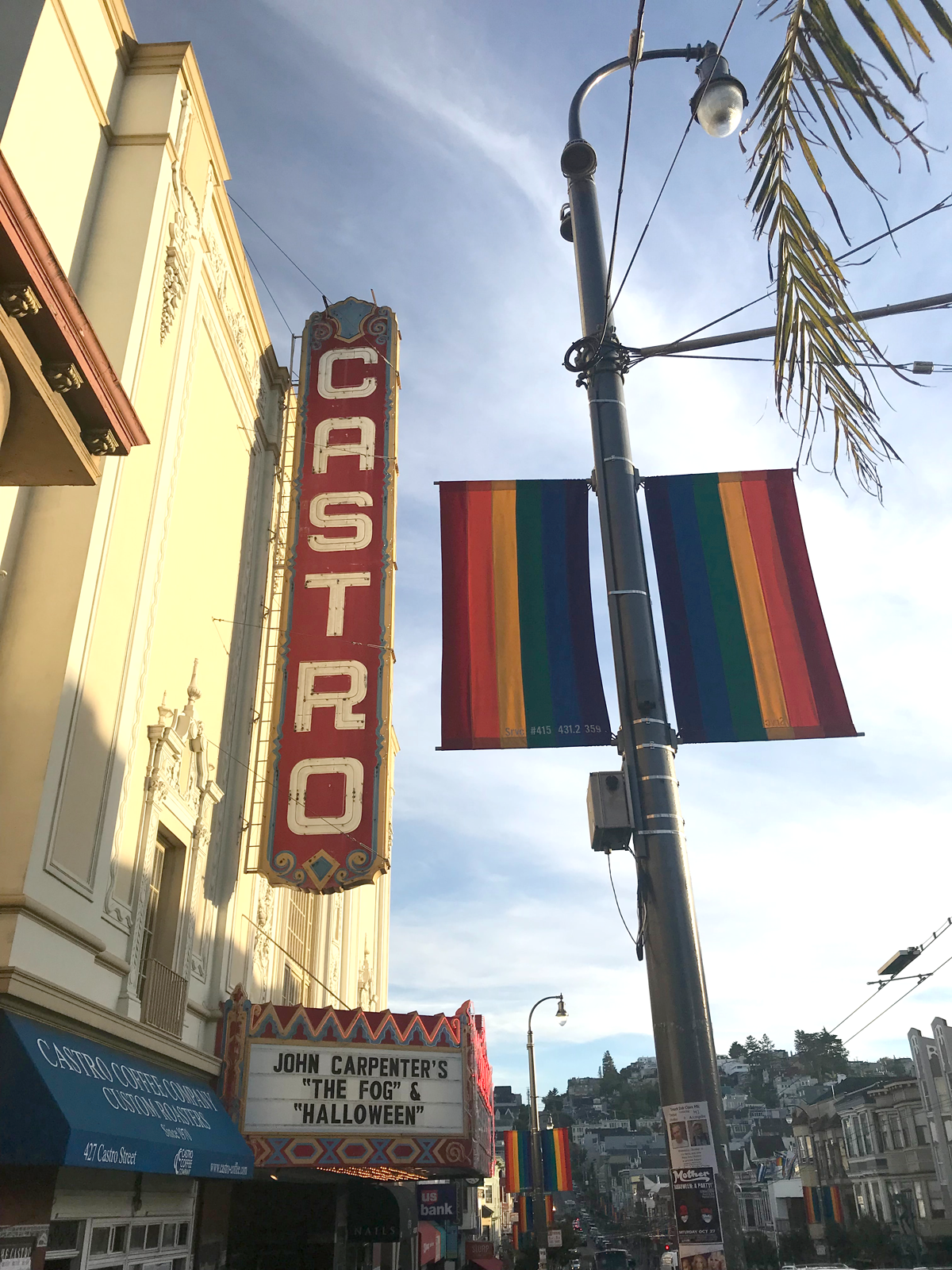SF: Castro
There’s just a feeling you get when you go to the Castro. You see that huge rainbow flag waving on the corner of Market and Castro Street and you go to a different place emotionally and mentally. You are steps away from the GLBT Historical Society, the first museum dedicated to GLBT history and culture in the United States. The neighborhood is colorful and full of life, and it’s one of those places that constantly remind you how truly unique and special San Francisco can be.
Photo by: Guido Coppa on Unsplash
But how did the Castro become the Castro? In the late 1800s, it was a working class neighborhood where you could buy a cheap piece of land and build a beautiful Victorian family home. It had a lot of bars and from the early days was a place people gathered. After WWII, families moved to the suburbs. White-collar, gay men were drawn to the real estate opportunities this presented and in the late 60s (Summer of Love) and into the 70s we start to see the Castro become this epicenter of culture and activism. Harvey Milk moved to San Francisco in 1972 and opened a camera shop on Castro Street which quickly became a gathering spot with its owner the Castro’s most famous resident and activist. He would eventually become one of the world’s first openly gay elected officials, and was tragically assasinated nearly a year later.
Many of the area’s original Victorians did not survive the 1906 earthquake. The four-story Alfred E. Clarke Mansion is an exception, and a historical landmark. It was briefly used as a hospital in 1904 and is currently divided and rented as apartments. During the holidays, people flock to a more modern landmark—the home of the recently passed Tom Taylor and Jerry Goldstein, LGBTQ activists and creators of the Tom & Jerry Christmas House with it’s lavish and wonderfully over-the-top decorations.
The Castro is a coveted place to live—which also makes it expensive. The weather is better comparative to other parts of the city. It has more hills than the Mission but you’ll still find some flat areas. Architecture is beautiful with well-kept Victorians and posh buildings to choose from. It’s really clean (not so for much of San Francisco), and it’s positioned for an easy commute to Silicon Valley. While the homes may be these large, expensive Victorians, they can have a very different feel on the inside. Remodeling these historic homes can cost a lot of money so they often have the dark, narrow corridors and sectional layouts popular in the past. It’s common to see one home with two doors, meaning a Tenancy in Common, or joint property ownership with 2 sets of homeowners. While living spaces are completely separate, you’ll likely share a backyard and follow some type of mini HOA.
The people and the businesses in the Castro are hip and diverse. Kitchen Story is my favorite breakfast spot—the Egg’s Benedict and Millionaire’s Bacon are a must try. Castro Coffee Company is brewing up some truly phenomenal beverages from a welcoming coffee bar with old school vibes. Réveille Coffee Co is also popular with a more modern interior and a full kitchen. Brunch at Starbelly and oysters on the half shell at Anchor Oyster Bar are just a few of the other highlights. The nightlife is good with tons of bars to choose from, including the iconic Twin Peaks Tavern—nicknamed the “gay Cheers.” Another neighborhood institution is the Castro Theatre, a movie palace built in 1922 and now a historical landmark.

